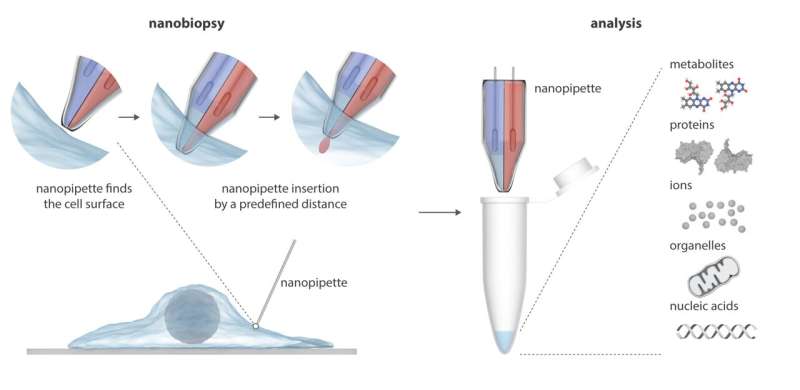Cancer treatment has long been hindered by the complex and ever-evolving nature of cancer cells, particularly in aggressive forms of the disease like glioblastoma (GBM). Now, a groundbreaking nanosurgical tool developed by scientists at the University of Leeds offers new hope in the fight against cancer by providing unprecedented insights into how individual cancer cells respond to treatment over time.
Published in the journal Science Advances, the study showcases a high-tech double-barrel nanopipette that can inject and extract samples from living cancer cells simultaneously, without causing harm. This innovative approach allows researchers to monitor changes in cancer cells’ behavior and characteristics during exposure to chemotherapy and radiotherapy, offering valuable understanding that could revolutionize cancer treatment strategies.
Dr. Lucy Stead, Associate Professor of Brain Cancer Biology at the University of Leeds, hailed the discovery as a significant breakthrough. She emphasized the tool’s ability to dynamically observe and characterize cancer cells as they evolve, providing insights that were previously unattainable. This newfound understanding, she believes, will pave the way for more effective cancer medications and therapies.
The study focused on glioblastoma, known for its resistance to treatment and poor prognosis. By repeatedly sampling individual cancer cells before and after treatment, researchers gained crucial insights into the cells’ adaptive responses—a key factor in their ability to survive treatment and fuel disease progression.
Dr. Stead highlighted the urgent need for innovative approaches to combat GBM, citing its stagnant survival rates over the past two decades. She expressed optimism that the nanosurgical tool could lead to the development of targeted treatments for this devastating disease, offering hope to patients and their families.
Dr. Simon Newman, Chief Scientific Officer at The Brain Tumor Charity, underscored the importance of the research in understanding drug resistance and tumor recurrence in glioblastoma. He praised the technology’s potential to drive advancements in cancer treatment and improve patient outcomes.
The nanosurgical platform, developed through interdisciplinary collaboration between biologists and engineers, represents a significant leap forward in cancer research. Its ability to study single cells in real-time provides unparalleled insights into cancer cell dynamics and behavior, laying the groundwork for personalized cancer therapies tailored to individual patients.
Lead author Dr. Fabio Marcuccio highlighted the collaborative effort behind the research, emphasizing the importance of interdisciplinary teamwork in tackling complex scientific challenges. He noted that the nanosurgical tool opens new avenues for studying cancer cell plasticity—a crucial factor in cancer progression and treatment resistance.
In the quest to conquer cancer, innovative technologies like the double-barrel nanopipette offer hope for a brighter future. By unraveling the mysteries of cancer cell behavior, researchers aim to develop more targeted and effective treatments, bringing us one step closer to defeating this formidable disease.
